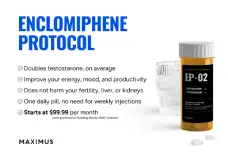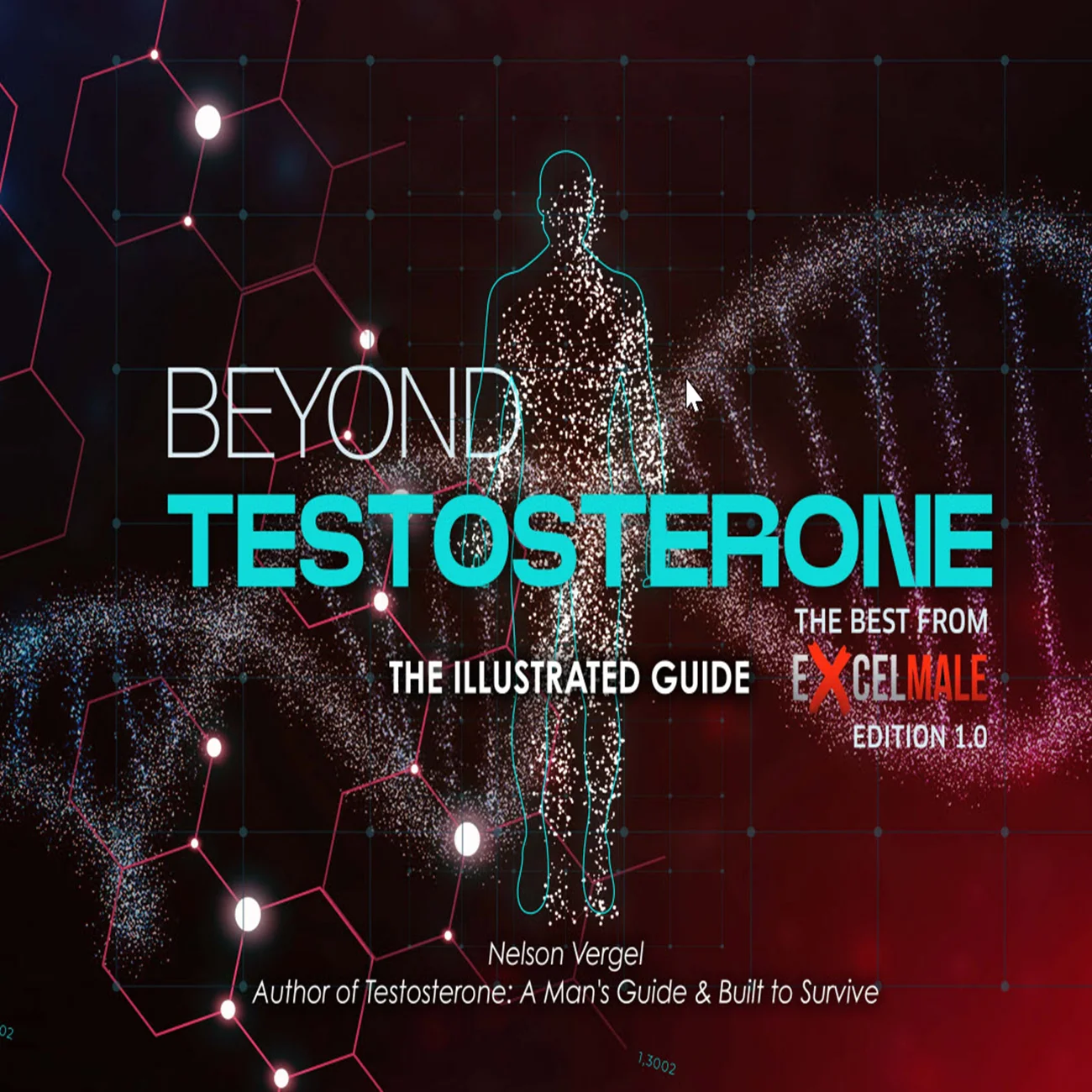* IA compared to LC-MS/MS in hypogonadal men overestimates significantly both the prevalence of biochemical Hy and TRT compensation both for TT and cfT. These results highlight the role of LC-MS/MS and SHBG assessments in every day clinical practice in the diagnosis and TRT monitoring of male Hy, avoiding unnecessary medication.
Background
Testosterone Replacement Therapy (TRT) in Hypogonadism (Hy) is started when total testosterone (TT) levels fall below 3.5 ng/ml in presence of a suggestive clinic, therefore the technology used to measure serum T levels is relevant. LC-MS/MS is the gold standard for sex steroids measurement, but it is mainly used for research, while IA is routinary used for clinical purpose. The use of LC-MS/MS in clinical labs is increasing, but its impact in the clinics remains unclear. We aimed to investigate the role of LC-MS/MS compared to IA in the diagnosis and management of male Hy.
Methods
A total of 116 Hypogonadotropic (70) or Hypergonadotropic (46) Hypogonadic men were enrolled irrespective of their treatment status, serum TT was assessed by LC-MS/MS and IA, together with SHBG for calculated free testosterone (cfT). Hy was defined according to the Italian Society of Andrology and Sexual Medicine (SIAMS) threshold: serum TT≤3.5 ng/mL and/or cfT<6.5 ng/dl. TT was quantified using CMIA DxI800 Beckman Coulter (IA) and Chrosystems MassChrom® Steroids in Serum/Plasma kit on Sciex CitrineTM (LC-MS/MS); cfT was calculated with the Vermeulen formula.
Results
Untreated and those patients under TRT were respectively 48 and 68, with a mean ± SD age of 45.98±17.56 years and a mean ± SD BMI of 28.09±5.36 kg/m2. Serum TT and cfT assessed with LC-MS/MS were directly related to serum TT (R2=0.6748, P < 0.001) and cfT (R2=0.8787, P < 0.001) assessed with IA, but the R2 did not show a precise concordance. Accordingly, the prevalence of biochemical Hy was significantly higher with IA than LC-MS/MS, for all Hy patients TT (59.5% vs 46.6%, OR 1.69, P = 0.025) and those untreated (87.5% vs 64.58%, OR 3.84, P = 0.011). A similar result was found even for cfT in all Hy (53.4% vs 39.7%, OR 1.75, P = 0.018) and the untreated ones (79.17% vs 58.33%, OR 2.71, P = 0.030). Correlation between serum TT measured by LC-MS/MS and IA was higher in the low (≤3.5 ng/mL) (R2=0.6877, P < 0.001) than in the normal to high (R2=0.4396, P < 0.001) range of serum TT, suggesting incongruence between the two in patients under T therapy.
Conclusions
IA compared to LC-MS/MS in hypogonadal men overestimates significantly both the prevalence of biochemical Hy and TRT compensation both for TT and cfT. These results highlight the role of LC-MS/MS and SHBG assessments in every day clinical practice in the diagnosis and TRT monitoring of male Hy, avoiding unnecessary medication.

Layman's Summary of the Study
Background
Testosterone Replacement Therapy (TRT) is used to treat men with hypogonadism-a condition where the body doesn’t make enough testosterone. Doctors usually start TRT when a man's total testosterone level drops below a certain point (3.5 ng/mL) and he has symptoms like low energy, reduced sex drive, or other signs of low testosterone. To decide who needs TRT, it’s important to accurately measure testosterone levels in the blood. There are two main ways to measure testosterone:
LC-MS/MS (Liquid Chromatography–Tandem Mass Spectrometry): This is considered the most accurate method, often used in research labs.
IA (Immunoassay): This is a quicker, more common test used in most clinics and hospitals.
Recently, more clinical labs have started using LC-MS/MS, but it’s not clear if it changes how doctors diagnose or treat low testosterone.
What the Study Did
The researchers looked at 116 men with different types of hypogonadism, whether or not they were already on TRT. They measured each man's testosterone using both LC-MS/MS and IA tests, and also calculated free testosterone (the active form in the body). They used guidelines from an Italian medical society to define low testosterone.
Key Findings
The two testing methods (LC-MS/MS and IA) gave similar results overall, but they didn’t always match up perfectly.
The IA test (the common one) found more men to have low testosterone than the LC-MS/MS test (the gold standard). For example, among all patients, the IA test diagnosed 59.5% with low testosterone, while LC-MS/MS diagnosed only 46.6%.
This difference was even bigger in men who weren’t on TRT yet.
The same pattern was seen for free testosterone measurements.
The two tests matched up better when testosterone levels were very low, but disagreed more when the levels were normal or high-especially in men already on TRT.
What This Means
The common IA test tends to overestimate how many men have low testosterone, and it may also make it seem like TRT is working better than it actually is.
Using the more accurate LC-MS/MS test could help avoid unnecessary TRT in men who don’t really need it, and give a clearer picture of how well treatment is working.
The study suggests that LC-MS/MS, along with measuring SHBG (a protein that affects free testosterone), should be used more often in everyday medical practice for diagnosing and monitoring low testosterone in men.
Bottom Line
The standard testosterone test (IA) used in most clinics may not be as accurate as the LC-MS/MS test, especially for men with borderline or treated testosterone levels. Relying on the more accurate LC-MS/MS test could help doctors make better decisions about who really needs testosterone therapy and how well the treatment is working, potentially reducing unnecessary medication and side effects[1][2][3][4].
Clinical Usefulness of Ultraperformance Liquid Chromatography-Tandem Mass Spectrometry Method for Low Serum Testosterone Measurement
https://www.sciencedirect.com/science/article/abs/pii/S1570023221004505
ARUP Testosterone Tests Comparison | ARUP Consult
Sex steroids measurement by immunometric assay (IA) compared to liquid chromatography-tandem mass spectrometry (LC-MS/MS) in patients with klinefelter syndrome (KS) | ECEESPE2025 | Joint Congress of the European Society for Paediatric Endocrinology (ESPE) and the European Society of Endocrinology (ESE) 2025: Connecting Endocrinology Across the Life Course | Endocrine Abstracts
Background
Testosterone Replacement Therapy (TRT) in Hypogonadism (Hy) is started when total testosterone (TT) levels fall below 3.5 ng/ml in presence of a suggestive clinic, therefore the technology used to measure serum T levels is relevant. LC-MS/MS is the gold standard for sex steroids measurement, but it is mainly used for research, while IA is routinary used for clinical purpose. The use of LC-MS/MS in clinical labs is increasing, but its impact in the clinics remains unclear. We aimed to investigate the role of LC-MS/MS compared to IA in the diagnosis and management of male Hy.
Methods
A total of 116 Hypogonadotropic (70) or Hypergonadotropic (46) Hypogonadic men were enrolled irrespective of their treatment status, serum TT was assessed by LC-MS/MS and IA, together with SHBG for calculated free testosterone (cfT). Hy was defined according to the Italian Society of Andrology and Sexual Medicine (SIAMS) threshold: serum TT≤3.5 ng/mL and/or cfT<6.5 ng/dl. TT was quantified using CMIA DxI800 Beckman Coulter (IA) and Chrosystems MassChrom® Steroids in Serum/Plasma kit on Sciex CitrineTM (LC-MS/MS); cfT was calculated with the Vermeulen formula.
Results
Untreated and those patients under TRT were respectively 48 and 68, with a mean ± SD age of 45.98±17.56 years and a mean ± SD BMI of 28.09±5.36 kg/m2. Serum TT and cfT assessed with LC-MS/MS were directly related to serum TT (R2=0.6748, P < 0.001) and cfT (R2=0.8787, P < 0.001) assessed with IA, but the R2 did not show a precise concordance. Accordingly, the prevalence of biochemical Hy was significantly higher with IA than LC-MS/MS, for all Hy patients TT (59.5% vs 46.6%, OR 1.69, P = 0.025) and those untreated (87.5% vs 64.58%, OR 3.84, P = 0.011). A similar result was found even for cfT in all Hy (53.4% vs 39.7%, OR 1.75, P = 0.018) and the untreated ones (79.17% vs 58.33%, OR 2.71, P = 0.030). Correlation between serum TT measured by LC-MS/MS and IA was higher in the low (≤3.5 ng/mL) (R2=0.6877, P < 0.001) than in the normal to high (R2=0.4396, P < 0.001) range of serum TT, suggesting incongruence between the two in patients under T therapy.
Conclusions
IA compared to LC-MS/MS in hypogonadal men overestimates significantly both the prevalence of biochemical Hy and TRT compensation both for TT and cfT. These results highlight the role of LC-MS/MS and SHBG assessments in every day clinical practice in the diagnosis and TRT monitoring of male Hy, avoiding unnecessary medication.
Layman's Summary of the Study
Background
Testosterone Replacement Therapy (TRT) is used to treat men with hypogonadism-a condition where the body doesn’t make enough testosterone. Doctors usually start TRT when a man's total testosterone level drops below a certain point (3.5 ng/mL) and he has symptoms like low energy, reduced sex drive, or other signs of low testosterone. To decide who needs TRT, it’s important to accurately measure testosterone levels in the blood. There are two main ways to measure testosterone:
LC-MS/MS (Liquid Chromatography–Tandem Mass Spectrometry): This is considered the most accurate method, often used in research labs.
IA (Immunoassay): This is a quicker, more common test used in most clinics and hospitals.
Recently, more clinical labs have started using LC-MS/MS, but it’s not clear if it changes how doctors diagnose or treat low testosterone.
What the Study Did
The researchers looked at 116 men with different types of hypogonadism, whether or not they were already on TRT. They measured each man's testosterone using both LC-MS/MS and IA tests, and also calculated free testosterone (the active form in the body). They used guidelines from an Italian medical society to define low testosterone.
Key Findings
The two testing methods (LC-MS/MS and IA) gave similar results overall, but they didn’t always match up perfectly.
The IA test (the common one) found more men to have low testosterone than the LC-MS/MS test (the gold standard). For example, among all patients, the IA test diagnosed 59.5% with low testosterone, while LC-MS/MS diagnosed only 46.6%.
This difference was even bigger in men who weren’t on TRT yet.
The same pattern was seen for free testosterone measurements.
The two tests matched up better when testosterone levels were very low, but disagreed more when the levels were normal or high-especially in men already on TRT.
What This Means
The common IA test tends to overestimate how many men have low testosterone, and it may also make it seem like TRT is working better than it actually is.
Using the more accurate LC-MS/MS test could help avoid unnecessary TRT in men who don’t really need it, and give a clearer picture of how well treatment is working.
The study suggests that LC-MS/MS, along with measuring SHBG (a protein that affects free testosterone), should be used more often in everyday medical practice for diagnosing and monitoring low testosterone in men.
Bottom Line
The standard testosterone test (IA) used in most clinics may not be as accurate as the LC-MS/MS test, especially for men with borderline or treated testosterone levels. Relying on the more accurate LC-MS/MS test could help doctors make better decisions about who really needs testosterone therapy and how well the treatment is working, potentially reducing unnecessary medication and side effects[1][2][3][4].
Clinical Usefulness of Ultraperformance Liquid Chromatography-Tandem Mass Spectrometry Method for Low Serum Testosterone Measurement
https://www.sciencedirect.com/science/article/abs/pii/S1570023221004505
ARUP Testosterone Tests Comparison | ARUP Consult
Sex steroids measurement by immunometric assay (IA) compared to liquid chromatography-tandem mass spectrometry (LC-MS/MS) in patients with klinefelter syndrome (KS) | ECEESPE2025 | Joint Congress of the European Society for Paediatric Endocrinology (ESPE) and the European Society of Endocrinology (ESE) 2025: Connecting Endocrinology Across the Life Course | Endocrine Abstracts
Last edited by a moderator:












